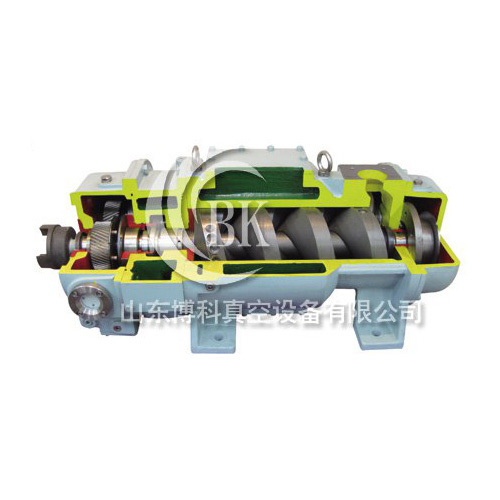BOKE BLOG
What is the working principle of dry vacuum unit?
Time:
2021-06-21
Dry vacuum unit, also known as dry mechanical pump, means that the pump can start to suck from atmospheric pressure, and the inhaled gas is directly discharged into the atmosphere. There is no oil or other working medium in the pump cavity, and the ultimate pressure of the pump is comparable to that of the oil-sealed vacuum pump. Or close to the mechanical vacuum pump.
Dry vacuum unit, also known as dry mechanical pump, means that the pump can start to suck from atmospheric pressure, and the inhaled gas is directly discharged into the atmosphere. There is no oil or other working medium in the pump cavity, and the ultimate pressure of the pump is comparable to that of the oil-sealed vacuum pump. Or close to the mechanical vacuum pump.
For general oil-free vacuum systems, accessories such as cold traps or adsorption traps can be added to the oil-sealed vacuum pump to prevent backflow, but the problem cannot be completely solved and the system will be complicated. In the right environment, the use of a suitable dry vacuum unit can make the use of the equipment more ideal.

What is the working principle of the dry vacuum unit? Let's analyze it together.
1) Dry screw vacuum pump
The dry screw vacuum pump is an air intake device with suction and exhaust effect produced by using a pair of screws to rotate in reverse at high speed at the same time on the pump casing. The two screws are slightly corrected by dynamic balance, supported by bearings, and installed on the pump casing. On the body, there is a certain gap between the screws and the screws, so the pump works without friction with each other, the movement is smooth, the noise is low, and the running cavity does not require lubricating oil. Usually used as an alternative to oil-sealed, water-ring, and jet vacuum pumps.
2) Oil-free reciprocating vacuum pump
The reciprocating motion of the piston regularly changes the working volume of the pump chamber (cylinder). A vacuum pump sucked in, also known as a piston vacuum pump. The structure of the reciprocating vacuum pump is similar to that of a reciprocating piston compressor. When working, the suction pipe is connected to the vacuum container, and the exhaust pipe is directly connected to the atmosphere. The reciprocating vacuum pump can be used for vacuum distillation, vacuum concentration, vacuum crystallization, vacuum filtration, vacuum drying, concrete vacuum operation, etc.
3) Claw vacuum pump
The claw vacuum pump is composed of multi-stage rotors, each stage has two rotors, the two rotors rotate in the opposite direction, the air inlet is connected to the pump cavity, the volume of the pump cavity increases, and the suction starts. When the rotor closes the air inlet, the suction ends, the pump cavity becomes smaller, the gas is compressed. After the exhaust hole is opened, the pump is discharged, and after the exhaust hole is closed, the discharge is completed and the cycle is completed.
4) Oil-free scroll vacuum pump
The vortex plate of an oil-free vortex vacuum pump consists of one or more spirals connected to the plane at one end to form a vortex-shaped disk structure. A pair of vortex discs composed of a static vortex disk and a moving vortex disk constitutes the basic suction structure of a vortex oil-free vacuum. For example, in a two-stage vortex oil-free vacuum pump, there are fixed vortex discs corresponding to two directions and rotating vortex discs between two vortex discs. The relative movement of the moving and static vortex discs forms a crescent-shaped vacuum cavity with changing volume, which sucks in air from the air inlet and discharges it from the air outlet to complete the exhaust cycle.
Related News


